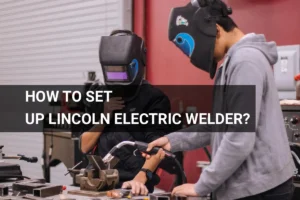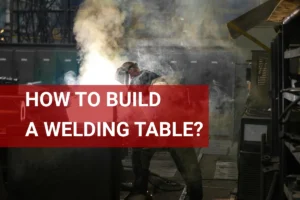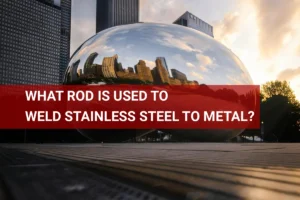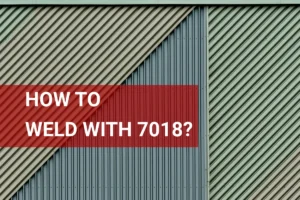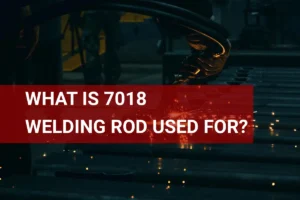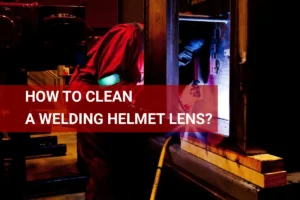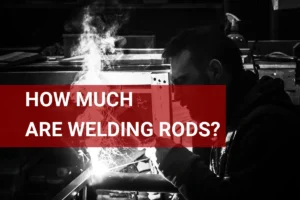How to Choose Electrode for Welding? Tips, Types, and Key Factors
Published on: April 30, 2025 | Last modified: March 4, 2025
By: Joe Carter
An electrode is a metal rod used in welding. It conducts electricity and provides filler material for the weld.
People often ask us how to choose electrode for welding. Picking the correct electrode is crucial; it affects the quality and strength of your weld. I’ve seen firsthand how the right choice can make or break a project.
In this guide, we’ll explore what an electrode is, different types of electrodes, necessary tools, steps for selecting an electrode, precautions, and factors affecting your selection. We’ll discuss common issues that could arise, aftercare practices, advanced tips, and key benefits of making the right choice. Additionally, we’ll touch on real-world uses and alternatives to electrode selection, especially how to select the welding electrode for different base metals.
Contents
- How to Choose Electrode for Welding?
- What is an Electrode?
- Types Of Electrodes in Welding
- Things You’ll Need
- Precautions
- Steps to Choose an Electrode for Welding
- Types Of Electrodes for Different Applications
- Factors Influencing Electrode Selection
- What Could Go Wrong: Common Issues
- Aftercare, Inspection, and Advanced Tips for Electrode Selection
- Understanding Electrode Chemistry
- Electrode Diameter and Its Effect on Weld Quality
- Key Benefits Of Choosing the Right Electrode
- Real-world Uses for Electrode Selection in Welding
- Exploring Alternatives for Electrode Selection
- Frequently Asked Questions (FAQs)
- Wrap-up
- Additional Reading
How to Choose Electrode for Welding?
An electrode is a conductor that helps transfer current during welding. To choose an electrode for welding, match types like E6011 for all positions, E7018 for low hydrogen—common for steel. Difficulty varies by skill; applications include construction or repairs. Proper technique is crucial for effective sheet metal welding, and understanding the process can ensure quality results; explore how to weld sheet metal to enhance your skills.
What is an Electrode?
An electrode is a vital tool in welding. It’s a conductor through which electricity enters or leaves a medium. Electrodes come in several types: solid, flux-cored, and coated. The diameter of an electrode typically ranges from 1.6 mm (1/16 Inch) to 5.0 mm (3/16 Inch), with common lengths of 300 mm (12 Inches) or longer for various applications.
Choosing the right electrode for welding depends on the base metal and the welding process. Using the correct electrode can significantly affect weld quality. For example, I used a 6011 electrode for a mild steel project and noticed a difference in the weld quality.
It was incredibly helpful for my first major project. Selecting the right electrode resulted in clean, strong welds. You should consider how to choose welding electrodes based on their coating, as the right choice directly impacts the strength and appearance of your work.
Types Of Electrodes in Welding
What types of electrodes can you choose for welding?
-
Mild Steel Electrodes
Mild steel electrodes are commonly used for welding various steel types. To choose the right one, select an electrode with a suitable coating. Check specifications like E6013 or E7018; the first number indicates the welding position and strength. Exploring the techniques such as hot pass in welding can further enhance the weld quality and efficiency.
-
Stainless Steel Electrodes
These electrodes work well with stainless steel and offer excellent corrosion resistance. Choose an electrode based on the alloy you’re welding, such as E308L for general use or E316L for higher corrosion resistance. Always verify its composition to match alloys.
-
Cast Iron Electrodes
Cast iron electrodes are designed for welding cast iron materials. Select the right one based on the iron type; for example, use ENiFe-CI for ductile iron. Review specifications for optimal durability and crack prevention.
-
Aluminum Electrodes
Aluminum electrodes are specific for welding aluminum, providing a clean finish. When selecting, find a rod that matches the aluminum grade, like 4047 for high alloying. Always consult a welding chart for the alloy series.
-
TIG Electrodes
TIG electrodes are used with tungsten inert gas welding, particularly for precision work. Choose a tungsten type, like pure tungsten for general welding or thoriated for better arc stability. Always consider the diameter based on the metal thickness you’ll weld.
You should now have a good understanding of welding electrodes and their types. In the next part, we’ll discuss necessary equipment.

Things You’ll Need
What do you need to choose the right electrode for welding?
- Welding Electrode Chart: A reliable chart, such as the E7018 or E6013 chart, helps you select the best electrode for the metal type.
- Welding Rod Storage Container: A container like the Lincoln Electric 5 lb. electrode rod holder is essential. It keeps your rods dry and protects them from moisture, which can affect performance.
- Steel Brush: You’ll need a DEWALT surface conditioning brush to clean the base metal and promote better weld quality.
- Welding Machine Settings Guide: A guide like the Miller MIG Settings DVD ensures you set the right voltage and wire speed for your chosen electrode.
You should now have a good understanding of necessary items for the task. In the next part, we’ll discuss safety measures.
Precautions
Let’s quickly review essential precautions for choosing an electrode for welding.
- Choose the right type: Different metals require specific electrodes. For example, use E6011 for mild steel for great penetration.
- Check the amp rating: Follow the manufacturer’s specifications to avoid burns or poor weld quality; E7018 typically runs between 70-200 amps.
- Inspect for moisture: Wet electrodes weaken welds; store them in a dry place, like a sealed container with silica gel packs.
- Wear proper safety gear: Always use a welding helmet and gloves to protect against sparks and UV radiation; I recommend the 3M Speedglas for excellent protection.
Taking these safety precautions is important—don’t skip them!
You should now have a good understanding of safety measures, risks, and guidelines. In the next part, we’ll discuss selecting welding electrodes.
Steps to Choose an Electrode for Welding
Here are the steps to select the right electrode for your welding needs.
-
Identify the Base Metal
Understand the metal you’ll be welding. Different metals—like aluminum, steel, or cast iron—require specific electrodes. For example, if you’re using mild steel, a 6013 electrode works well. Always match the electrode material to the base metal for strong bonds. Recognizing the factors that can lead to porosity in welding is crucial for maintaining the integrity of the weld.
Once you know your base metal, refer to a welding electrode selection chart. This chart helps you find the right type. Knowing the alloy composition also helps refine your choice. I once welded without checking the metal type, leading to poor results.
-
Choose the Electrode Type
Select an electrode type based on your project. There are four main types: coated, bare, flux-cored, and aluminum. Coated electrodes are excellent for beginners due to their ease of use, while flux-cored is ideal for outdoor work since it resists wind. Choose wisely based on your environment and skill level.
Coated electrodes connect solidly with most mild steels. In contrast, flux-cored electrodes provide better penetration. Each type has pros and cons, so weigh them based on your project needs. Mistakes can happen, but with experience, you’ll improve.
-
Determine Size and Diameter
Select the right diameter for your electrode. General rule: the thicker the material, the larger the electrode. For a 3/16 inch (4.76 Mm) base metal, a 5/32 inch (3.97 Mm) electrode typically performs well. An overstressed rod can result in weak welds.
Consider the welding position. For overhead joints, smaller diameters provide better control. Using the wrong diameter can make it difficult to maintain a seamless bead. Knowing the right diameter beforehand saves time and hassle.
-
Check Current Settings
Set the appropriate amperage for your electrode. Each type has ideal settings, often ranging from 60 to 150 amps, depending on thickness and type. Setting it too low won’t provide penetration, while too high can burn through the metal.
Refer to the welding rod number chart to determine the precise amperage for your electrode. An accurate setting can significantly impact your results. I learned the hard way—playing with currents can lead to inconsistent outputs!
-
Store Electrode Properly
Store electrodes in a dry, clean environment. Moisture can damage them, especially coated types. Use airtight containers to keep them in top shape. Damaged electrodes lead to poor-quality welds.
Key storage tips: use airtight containers or specific racks. Avoid direct sunlight and high humidity. If they get wet, re-dry them according to the manufacturer’s guidelines. Proper storage is a small step that pays off!
We covered how to select a welding electrode and its essential criteria. Next, we will explore various electrode types for specific applications.
Types Of Electrodes for Different Applications
Let’s discuss the various types of electrodes. We’ll cover welding cast iron, MIG welding, TIG welding for stainless steel, stick welding, and electrode selection for aluminum.
-
Welding Cast Iron
For cast iron, use nickel-based electrodes. They prevent cracking and improve tensile strength. Look for E NiFe-C or E NiCu; these withstand high stresses. Choose based on your cast iron’s composition.
-
MIG Welding Applications
MIG welding is suitable for mild steel, stainless steel, and aluminum. Use ER70S-6 for mild steel; it handles contamination well. For aluminum, use ER4047, which offers excellent flow and low melting points. When perfecting your welding skills, it’s essential to know how to efficiently cut welds for clean results.
-
TIG Welding for Stainless Steel
The best match for stainless steel is the ER308L electrode. It provides excellent corrosion resistance and doesn’t need shielding gas when using Filler Metal 309. Keep your tungsten sharp for better arc stability.
-
Stick Welding Procedures
For stick welding, E6011 and E6013 are top choices. E6011 excels on dirty or rusty surfaces, while E6013 works better on clean metals with fine finishes. Match the electrode size to the workpiece thickness; typically, 1/8 inch (3.2 Mm) works for most tasks.
-
Electrode Selection for Aluminum
For aluminum, I recommend ER4047 or ER5356. ER5356 is suitable for high-stress applications and offers good corrosion resistance. I find ER4047 easier for thin materials due to its lower melting point.
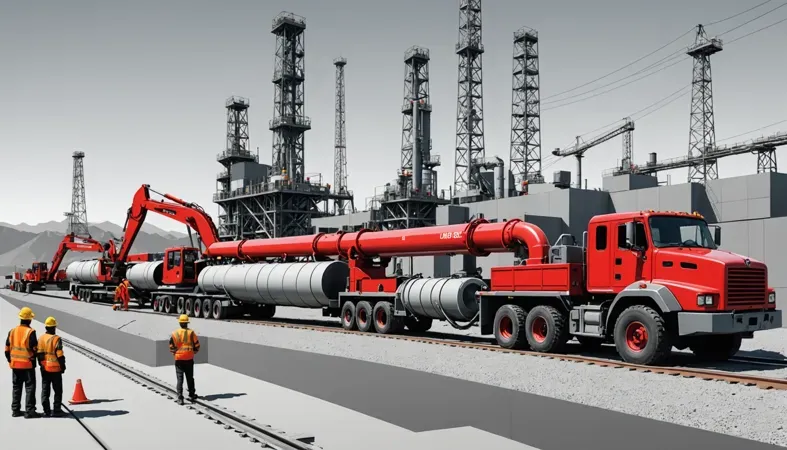
Factors Influencing Electrode Selection
What factors affect your choices for picking the right electrode?
-
Material Compatibility
Select an electrode that matches your base material. For instance, a 6010 electrode works well with mild steel, while aluminum requires a specific electrode like ER4047.
-
Welding Process Type
The welding method you choose influences electrode selection. For example, stick welding typically uses cellulose-based electrodes, while TIG (Tungsten Inert Gas) welding prefers non-consumable tungsten rods for precision.
Understanding the factors leading to defects in welding, such as what causes crater cracks, is essential for maintaining weld integrity and strength.
-
Environmental Conditions
Weather matters! I once used a low-grade electrode in wet conditions, and it wouldn’t bond. Moisture makes certain electrodes like E7018 perform poorly, often leading to porosity (Tiny Holes) and weld defects.
-
Welding Equipment
Your equipment’s voltage and amperage settings dictate the best electrode. A low-cost welder might not handle thick electrodes well, so it’s critical to follow the manufacturer’s specifications. It’s also important to consider the health risks associated with welding, as certain processes may expose you to harmful fumes and particles linked to welding-related cancer risks.
-
Welder Skill Level
Your experience affects electrode choices. Beginners may find a 6013 electrode easier to use, as it offers better arc stability, leading to fewer mistakes.
What Could Go Wrong: Common Issues
Let’s look at problems with the electrode.
-
Improper Electrode Handling
Mismanagement of electrodes leads to poor welds. Keep them dry! If they’re damp, dry them at 150°C (300°F) for one hour to prevent hydrogen cracks.
-
Incompatibility With Material
Using the wrong electrode with metal can ruin a project. I once mistakenly used a mild steel electrode on stainless steel. Always check compatibility charts first!
-
Incorrect Voltage Settings
The wrong electrode voltage can cause weak or overburnt welds. Adjust to recommended levels—typically 18-30V for stick welding.
-
Electrode Contamination
Dirty electrodes can cause defects. Inspect for rust or grease. Clean them regularly with a wire brush or solvent.
-
Suboptimal Welding Techniques
Poor welding technique shortens electrode life. Use a consistent speed and a 15° angle to maintain joint quality.
Aftercare, Inspection, and Advanced Tips for Electrode Selection
Here’s essential advice on aftercare, inspection, and expert tips for electrode selection.
Aftercare Tips
After choosing your welding electrode, store it in a sealed container to keep moisture out. Use a storage box that maintains humidity below 40% to prevent rust on the electrodes. Keep them organized; place similar electrodes in separate compartments to avoid confusion during welding.
Inspection
Inspect each electrode before use. Look for visible damage, like cracks or bends, which can affect performance. For instance, E6011 electrodes should be smooth and pristine—no blemishes or bubbles—to ensure a clean weld every time.
Expert Tips
Here’s a pro tip from my experience: always match the electrode diameter with the material thickness for better stability. Use E7018 electrodes (3.2 Mm or 1/8 in Diameter) for steel 5 mm (0.2 In) and thicker to ensure strong bonds. Also, consider preheating the base metal; even temperatures around 100°C (212°F) can improve weld quality and reduce the risk of cracking.
Understanding Electrode Chemistry
Electrode chemistry is crucial in welding. Different coatings and materials affect performance, strength, and applicability. Let’s explore some key chemical components that influence electrode selection.
| Electrode Type | Coating Material | Chemical Properties | Application |
|---|---|---|---|
| E6011 | Cellulose-based | High penetration, withstands dirt | Mild steel, outdoor conditions |
| E7018 | Low hydrogen | Minimized hydrogen, reduces cracking | Structural steel |
| E308L | Stainless steel coating | Corrosion-resistant, stable weld | Stainless steel applications |
| ER4047 | Aluminum | Low melting point, excellent flow | Welding aluminum alloys |
Electrode Diameter and Its Effect on Weld Quality
The diameter of an electrode plays a significant role in the overall weld quality. Here are some considerations when selecting electrode size:
- Thicker Materials: Larger diameters help with heat distribution and penetration.
- Thin Base Metals: Use smaller diameters for better control and weaker penetration to avoid burn-through.
- Vertical and Overhead Welds: Smaller diameters allow easier manipulation and better bead control.
Key Benefits Of Choosing the Right Electrode
The right electrode makes a real difference in your welding projects. I’ve noticed smoother welds since I switched to a more suitable electrode for my material.
Moreover, using the correct electrode improves penetration, boosts arc stability, and enhances overall weld quality. It also reduces spatter and shortens cleanup time. Plus, it can extend electrode life, saving you money in the long run!
Real-world Uses for Electrode Selection in Welding
People use different electrodes for various tasks. Here are some specific applications:
- Automotive Repair: Low-hydrogen electrodes are popular for welding high-strength steels. They’re crucial for maintaining the vehicle’s integrity and safety.
- Pipe Welding: 7018 electrodes are preferred for high-pressure pipe applications. Their strength and ductility ensure reliable seams in critical infrastructure.
- Aerospace Manufacturing: Using aluminum electrodes helps join lightweight materials. It’s essential for reducing overall craft weight and enhancing flight performance.
- Marine Construction: Stainless steel electrodes protect against corrosion in shipbuilding. They provide durability in harsh ocean environments.
Exploring Alternatives for Electrode Selection
When it comes to choosing an electrode for welding, there are some solid alternatives. Using branded products like E6013 rods or E7018 electrodes can simplify your selection. In certain cases, these specific options perform better in different scenarios, like welding steel versus aluminum.
You might also consider gas metal arc welding (GMAW) or flux-cored arc welding (FCAW) as alternative methods. These techniques often eliminate the need to pick specific rods because they use continuous wire feeding. Both approaches offer great results while minimizing prep time, making them appealing for quick projects. For a deeper understanding of the different types, you can look into the various choices related to welding rods used in these processes.
For those looking to tackle more challenging welding tasks, mastering vertical welding techniques can be particularly rewarding.
Frequently Asked Questions (FAQs)
Now let us look at some common questions I typically get asked about welding electrodes.
How Do You Select an Electrode in Welding?
To select an electrode in welding, you need to consider the type of material you’re welding and the welding process. Different processes, like SMAW or GMAW, require specific electrodes. For instance, E7018 is commonly used for mild steel due to its versatility and strength.
How Do I Choose an Electrode Size for Welding?
Choosing an electrode size for welding depends on the thickness of the material you’re working with. Typically, an electrode diameter of 2.4 mm (3/32 in) suits materials up to 3 mm (1/8 in) thick, while larger diameters like 4.0 mm (5/32 in) work well for thicker sections.
If you’re a welder wondering about safety concerning medical scans, you might ask can a welder get an MRI.
Which is Better, 6013 or 7018?
The choice between 6013 and 7018 depends on your project requirements. E6013 is excellent for light-duty welding and positions, whereas E7018 offers higher strength and is ideal for structural work. If you’re aiming for strong joints, E7018 is the way to go.
How Do I Calculate How Much Welding Rod I Need?
To calculate how much welding rod you need, consider the joint’s length and size. A general rule is that 1 kg (2.2 Lbs) of filler rod can weld about 4.5 m (15 Ft) of a 5 mm (3/16 in) thick weld. Adjust this based on weld type and joint design.
How Do I Store Welding Electrodes?
Storing welding electrodes correctly is essential to maintain their quality. Keep them in a dry environment, ideally in an airtight container. Moisture can ruin the electrodes. For instance, low-humidity conditions below 60% are optimal for storage.
How Do You Weld With Electrodes?
Welding with electrodes requires a few simple steps: first, set up your welder correctly. Then, strike an arc by briefly tapping the electrode to the base metal. Maintain a consistent arc length during the weld, typically 2.5 mm (1/10 in) for best results.
Wrap-up
We covered various key concepts about how to choose an electrode for welding. This included what an electrode is, the types of electrodes used, factors influencing selection, and precautions to take. Additionally, we explored welding equipment and its importance in the overall process, along with aftercare, inspection, common issues, and real-world applications.
So, when you’re figuring out how to choose an electrode for welding, remember the basics. Think about the type of material you’re welding, the electrode’s coating, and so on. I hope these welding tips prove valuable to you as you select the right electrode for your specific needs and avoid common pitfalls.
To further enhance your welding knowledge, feel free to visit What is Welding for additional tips and guidance.
Additional Reading
- American Welding Society. (2015). AWS D1.1/D1.1M: Structural Welding Code – Steel. Miami, FL: AWS.
- American Welding Society (AWS): https://www.aws.org
- Welding Institute (TWI): https://www.twi-global.com
Joe Carter is a retired welding professional with over 40 years of hands-on experience in the industry, spanning ship repair, structural welding, and even underwater projects. Joe is a master of MIG, TIG, and Stick welding. Passionate about mentoring the next generation of welders, Joe now shares his decades of expertise and practical insights to help others build rewarding careers in welding.
6010 Electrode, American Welding Society, Electrode Selection, Types Of Electrodes, Welding, Welding Equipment, Welding Materials, Welding Safety, Welding Techniques
